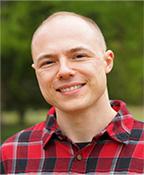How we can strengthen our careers and the field as a whole through strategic collaborations.


By Arthur Berger | STC Member and Dr. Nupoor Ranade | STC Member
If you are like us, professional development is one of your goals for the new year. As a technical writer, Art pursues increasingly technical certifications that even most software developers do not have. As a professor, Nupoor fills her schedule with conferences and publications that can have fairly narrow audiences that do not always intersect. Such different focuses in professional development activities reflects the long-standing narrative of academia and industry as “worlds apart” (Dias, Freedman, Medway, and Paré, 1999).
A recent study from the Journal of Business and Technical Communication that compared research topics of academia and the field as represented by Intercom noted that even the emphases of what technical communication involves can differ considerably among industry and academia (Friess and Boettger, 2021). This disconnect seems to be growing more and more, and is not just limited to training and professional development focuses. Even students recognize this, such as Sangin Lee’s masters thesis (2014) that argued for technical communication academics and practitioners to acknowledge and strive towards reconciling the gap within the field in a timely manner to prevent, among other things, a lack of public understanding of the field, clear pathways for entry into the field, industry standards, and professionalization opportunities for practitioners.
But our past histories, activities, and especially this collection of articles for Intercom also suggest ways in which bridging these worlds, often through the Society for Technical Communication, can strengthen your career, as well as the field as a whole. The two of us editors met in graduate school at NC State University. We were fortunate to belong to a masters program that emphasized a balance between theory and practice, such as a requirement for a summer-long internship. One highlight was working together to revive a student-run “unconference” on techcomm, SpeedCon, that featured a range of local academic and industry speakers. After graduation and in different careers, we continued to collaborate on research presentations, guest lectures, and other projects together, some facilitated through the Society. Although seldom skills-based, these activities laid the groundwork for future projects, deeper understanding of our place in both worlds, and even promotion packets that would not have been possible if we had pursued individual and job-driven professional development only.
Similarly, the articles in this edition share experiences and ideas for how to bridge the worlds of academia and industry to improve the training and development of practitioners, especially students and early or career-transitioning professionals.
- Saul Carliner characterizes the key similarities and differences between education and training as applicable to the technical communication industry. He suggests ways that faculty can teach corporate training programs and practitioners can teach college classes to help bridge the gaps of knowledge in both spaces.
- Chris Dawson takes you behind the scenes of an award-winning, industry-academic pathfinder mentorship program between IBM and NC State University.
- Stacey Pigg shows how research collaborations contribute not only to the field’s knowledge, but also one’s own lifelong learning and professional development.
- Allison Durazzi illustrates a two-step process for connecting work experience to course objectives and learning activities in technical communication, including examples for you to develop your own.
- Daniel Hocutt shows how through career reflection, you can identify theoretical and critical interventions to help address your mundane communication activities.
- As both a practitioner and a student nearing the completion of her Ph.D. dissertation, Alexandra Cata-Ross shows where academic research fits into a practitioner’s world.
- We conclude with an interview from Guiseppe Getto, Ph.D. and Christina Mayr, successive past presidents of the Carolina chapter, who share takeaways for what both their academic-industry and Society partnerships mean for professional growth, training, and development as technical writers.
Many of our contributors have shared experiences with the same STC chapters, universities, research projects, companies, and more. This decision was deliberate, to emphasize the personal element in professional development and the interconnectedness of the two worlds. These articles also showcase many programs that exist outside STC. Many times when we think of professional development, either individually or as leaders of an STC chapter, we think of how to build up the infrastructure in our own part of the world. This year, let’s consider how we can spend some of our efforts on infrastructure that connects our world with others. We hope that this edition gives you practical ideas on how to do so.
References
Dias, P., Freedman, A., Medway, P., & Paré, A. Worlds Apart: Acting and Writing in Academic and Workplace Contexts. Lawrence Erlbaum Associates, 1999.
Friess, E., & Boettger, R. K. (2021). Identifying commonalities and divergences between technical communication scholarly and trade publications (1996–2017). Journal of Business and Technical Communication, 35(4), 407–432. https://journals.sagepub.com/doi/full/10.1177/10506519211021468
Lee, Sanglin. “A Pedagogical Model for Realigning the Priorities in Technical Communication Between Industry and Academia.” Thesis for the degree of Master of Arts in English, Virginia Polytechnic Institute and State University, Blacksburg, VA, 2014.


